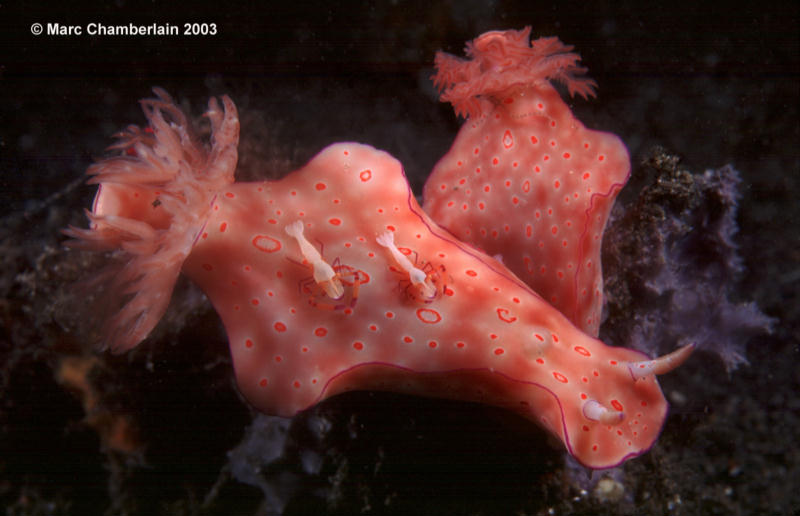 |
Ceratosoma trilobatum
Photo couresty of Marc ChamberlainLembeh Straits, Indonesia
Ceratosoma trilobatum (J. E. Gray, 1827)
The genus Ceratosoma belongs to the family Chromodorididae. Some species like Ceratosoma amoena as depicted on Bill Rudman's Sea Slug forum have a shape quite similar to classical chromodorids with flat oval bodies. Species like Ceratosoma trilbatum , shown here, have a surprisingly different body shape. C. trilbatum has a tall arch shaped horn-like lobe behind the gill, and as the name implies, a second and third lateral lobe on the side of the body. There is a ridge along the edge of the dorsum from the lateral lobes to the head. This species is often confused with Ceratosoma tenue .
All species of Ceratosoma produce a noxious chemicals offensive to predators. These secondary metabolites are produced by the nudibranch from chemicals it obtains from the sponges they feed on. In C. trilbatum there is a concentration of the glands that produce these chemicals at the tip of the large lobe behind the gills. The color of C. trilbatum varies greatly and in some species this lobe is brightly colored, like a bright colored fishing lure, drawing any curious predator to both a non-life critical piece of body tissue and the most distasteful part of the animal. This species is truly a great example of nudibranchs using aposomatic "warning" coloration.
Ceratosoma's also seem to be a preferred host of the commensal shrimp,
Perclimenes imperator . This shrimp is common on other nudibranchs such as
Tambja sp.
and
Hexabranchus. It is not uncommon at all to find one or more pairs of these shrimp on a single individual slug. The relationship between shrimp and slug seems to be mutual, the shrimp derives protection from the slugs warning color and nasty chemicals and the slug benefits by having its own personal cleaner shrimps.
As seen in Marc's shot of the egg ribbon , it is a bright aposomatic red color. I would not be surprised if the eggs too contained the same foul tasting chemicals found in the mantle lobes, like those of Hexabranchus sanguineus.
Danville, Calif
Dec. 2003

Send Marc mail at chamberl@usc.edu |
Taxonomic information courtesy of:

David W. Behrens
Author:
Pacific Coast Nudibranchs
Send Dave mail at dave@seachallengers.com
|
